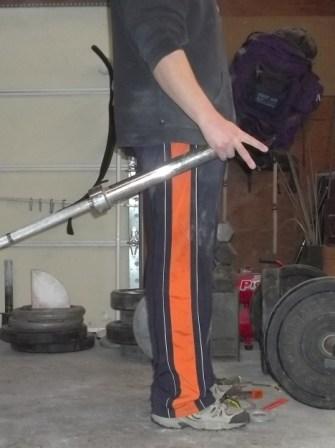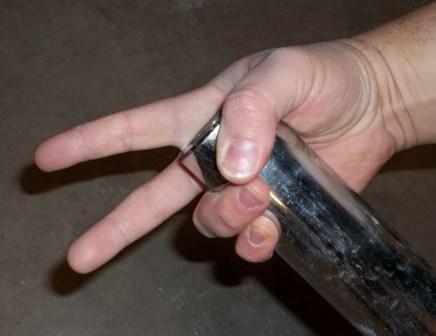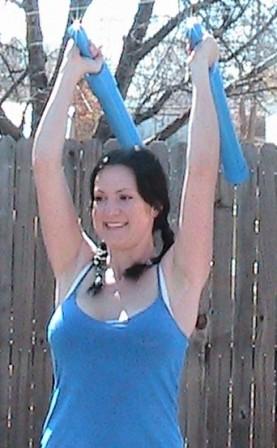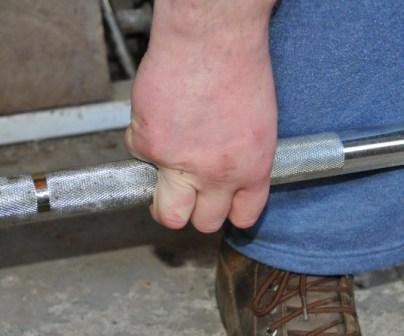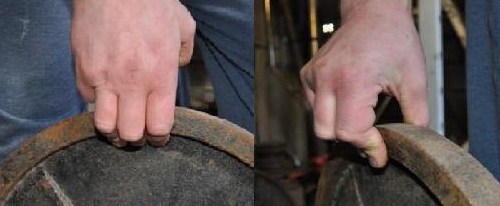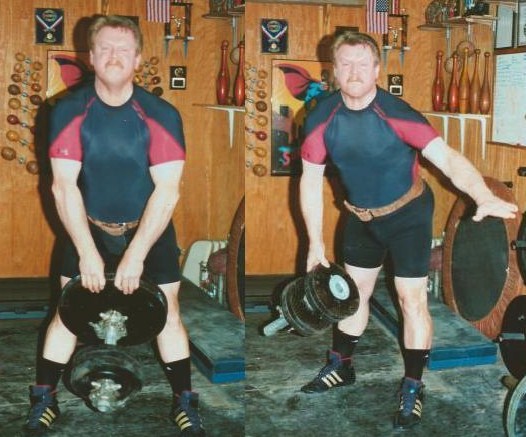WORKING MAN’S GRIP TRAINING
BY DAVE GLASGOW
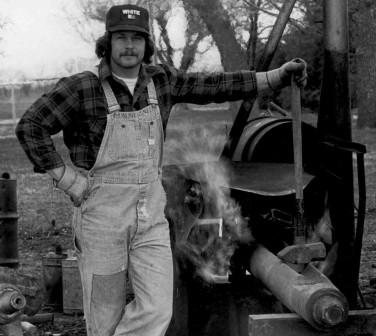
DAVE GLASGOW IN FRONT OF THE FORGE THAT WAS USED TO HEAT THE DRILL BITS. DAVE IS USING THE 16 POUND SLEDGE HAMMER THAT WAS MENTIONED IN THIS STORY. THIS PICTURE IS FROM 1978.
FOR SOMEONE WHO HAS NEVER, SERIOUSLY, TRAINED GRIP, I THINK I HAVE A FAIR GRIP. I AM CERTAIN I KNOW WHY!! I SUPPOSE MANY WILL QUESTION IF THIS IS A TRUE “GRIP WORKOUT”, HOWEVER, I THINK THE STORY BARES TELLING, IF NOTHING ELSE.
MY DAD, JOHN, HAD A DRILLING BUSINESS THAT HE STARTED IN 1957. I BEGAN HELPING POP FROM AN EARLY AGE. WHEN I GOT OUT OF COLLEGE, (I DID’NT GRADUATE, BUT THAT IS ANOTHER STORY!), I WENT TO WORK FOR POP FULL TIME. I WAS YOUNG, IN GOOD SHAPE AND I REVELED IN THE PHYSICAL ASPECT OF THE JOB.
WE RAN WHAT IS CALLED A “CABLE TOOL” RIG THAT DRILLED MUCH AS A GIANT CHISEL DOES. THE MAIN COMPONENT OF THIS DRILLING RIG WAS A STRING OF “TOOLS’, AT THE END OF WHICH WAS A GIANT BIT. DEPENDING ON THE SIZE OF THE HOLE YOU WERE DRILLING, THE BITS COULD WEIGH FROM #200 TO A HALF TON OR MORE. THE BITS WERE NOTHING MORE THAN HUGE CHUNKS OF STEEL WITH A SHARPEN END. IT IS THIS “SHARPENED” END THAT MAKES UP THE CRUX OF THIS STORY.
IN ORDER TO SHARPEN THESE BITS, YOU HAD TO PUT THEM IN A FORGE, HEAT THEM UNTIL THEY WERE WHITE HOT, THEN, BEAT THE END WITH A SLEDGE HAMMER TO GET THE ANGLE (POINT) YOU NEEDED.
MOST OF YOU HAVE HEARD THE PHRASE, ‘STRIKE WHILE THE IRON IS HOT!!?’ THAT IS EXACTLY WHAT WE HAD TO DO! TWO MEN WERE NEEDED TO DO THIS, WITH ONE MAN ON EACH SIDE OF THE BIT AND HAMMERED THE END WITH A SLEDGE UNTIL ONE OF THREE THINGS HAPPENED. ONE- YOU COULDN’T BREATH; TWO- THE IRON GOT TOO COLD OR, THREE- YOUR GRIP GAVE OUT!
NOW, FRIENDS AND NEIGHBORS, I SEE IT HAS RECENTLY BECOME FASHIONABLE TO USE A SLEDGE HAMMER FOR AN AEROBIC WORKOUT. THAT IS ALL WELL AND FINE; HOWEVER, WE WERE DOING IT TO MAKE A LIVING!! AEROBIC WORKOUT BE DAMNED!!
THROW INTO THE MIX; WE HAD THREE DIFFERENT WEIGHTS OF SLEDGES. TWELVE, FOURTEEN AND SIXTEEN POUND, THE SIXTEEN HAVING BEEN USED BY MY GREAT UNCLE FOR THE SAME PURPOSE BACK IN THE LATE FORTY’S. AS YOU SEE, YOU COULD VARY THE WEIGHTS, REPS AND NUMBER OF SETS, JUST AS YOU WOULD YOUR REGULAR WORKOUT.
BY THE TIME WE FINISHED, I SWEAR, THERE WERE TIMES I THOUGHT MY FOREARMS WERE GOING TO EXPLODE! THIS WHOLE PROCESS WOULD TAKE ABOUT THREE HOURS FROM THE FIRST “BEAT” UNTIL YOU HAD THE FINISHED PRODUCT, TAKING ABOUT FIVE TO SIX “BEATS”, WITH ABOUT TWENTY MINUTES BETWEEN “BEATS”. THE NET RESULT BEING, FOR THE REST OF THE DAY, AND WELL INTO THE NEXT, YOU WOULD WALK AROUND WITH ‘POPEYE’ FOREARMS!
NOW, BEING YOUNG, DUMB AND FULL OF ….EAGERNESS, I FELT IT UNMANLY TO USE ANYTHING LESS THAN THE 16#. HOWEVER, AFTER THE THIRD “BEAT”, I WOULD RELENT AND CHANGE TO THE 14#, AS MY LUNG CAPACITY WAS NOT NEAR AS GREAT AS MY BONEHEADED PRIDE!!
SO, YOU BE THE JUDGE!! IS THAT A WORKOUT OR NOT??
I MIGHT ALSO COMMENT THAT MY POP, WHO WAS FARM BOY STRONG AND OIL PATCH TOUGH, WOULD OUTLAST MY BROTHER AND ME, THEN STAND THERE, CALL US “CANDY-ASSES” AND BURST INTO UPROARIOUS LAUGHTER AT THE SIGHT OF HIS OFF-SPRING GASPING FOR BREATH!!
